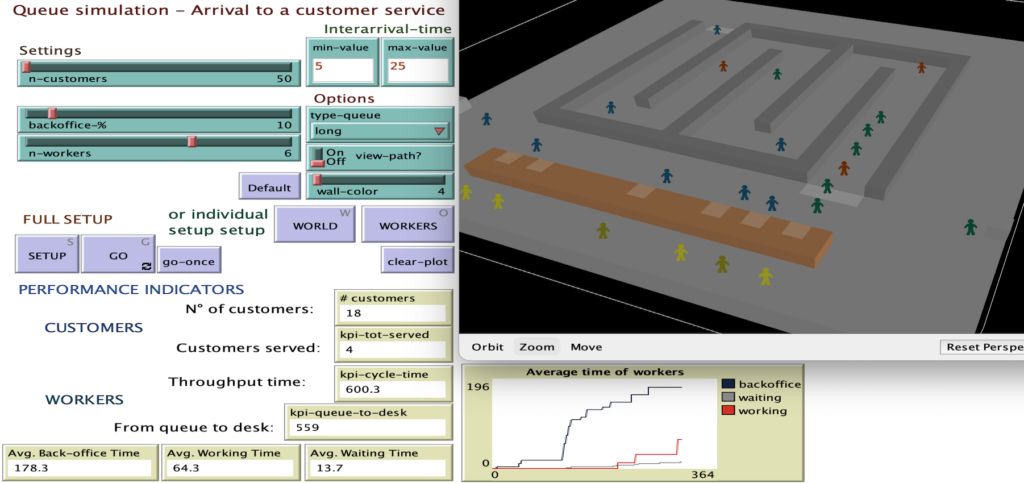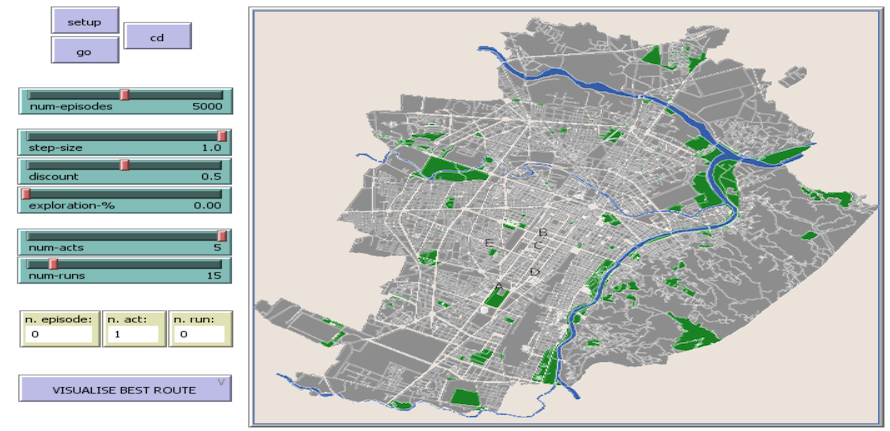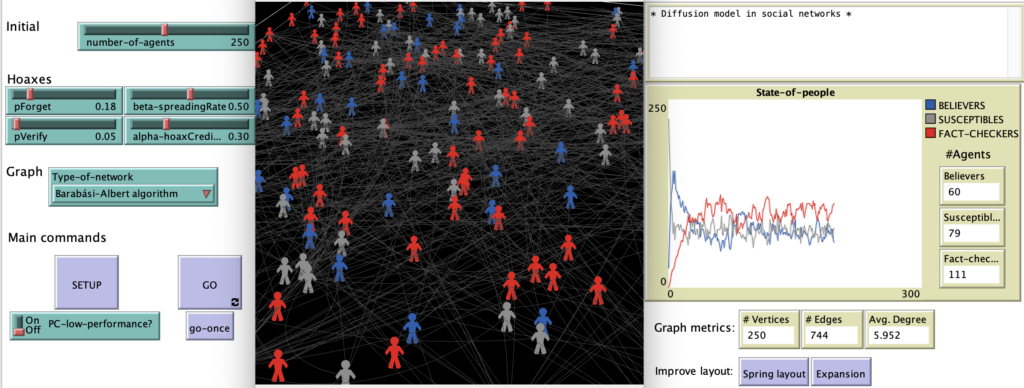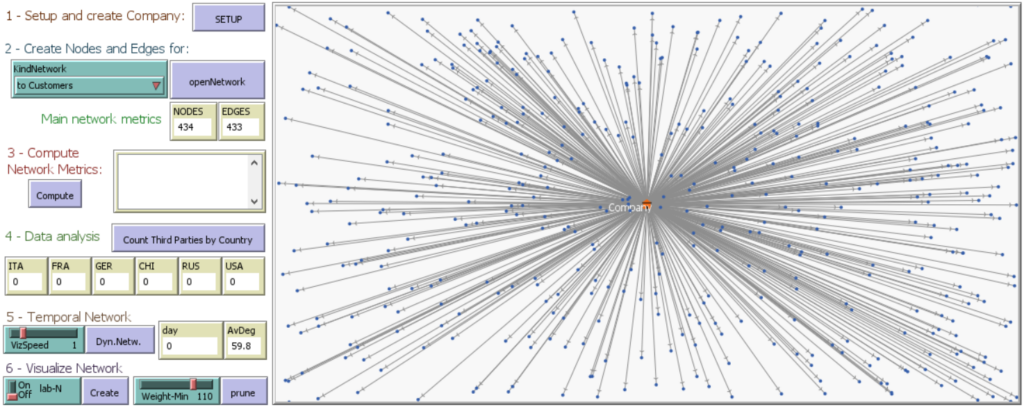Chapter 8 models of the Springer Book “Agent-based business process simulation”
Chapter 8. Practical applications
- ABBPS_Ford-Mazda
- ABBPS_Serpentine-queue
- ABBPS_Interarrival-times
- ABBPS_Registration-process
- ABBPS_GA_example
- ABBPS_RL
- ABBPS_Dissemination-processes
- ABBPS_Supply-chain
ABBPS_Ford-Mazda
The model describes the payment processes in Ford and Mazda organisations. The process in Mazda (before the acquision by Ford in 1979) includes an Information System to register orders from “Purchasing office” to “Vendors”, the arrival of products in “Receiving”, and a link to “Account payable” office.

ABBPS_Serpentine-queue
The model describes people arriving in a (serpentine) queue waiting for reaching the desk of an operator service. This can be the case of arrivals in a bank or in an airport. Customers move into the Serpentine Queue to the desk of operators to be served, then exit the process. Performance metrics involves timing of customers, as well as the working/waiting time of operators.

ABBPS_Interarrival-times
A generator of turtles to test different interarrival times: at fixed time (i.e., one new turtle every x ticks); uniform distribution (from a minimum value up to a maximum value); triangular distribution (minimum, mean, maximum values); normal distribution. This example performs different arrival distributions of new entities in the interarrival times model.

ABBPS_Registration-process
The model describes the operation of a service (e.g., registration office for a hospital laboratory) including four activities: two of these involve an operator, the other two are performed by customers (patients). Agents (both operators and customers) act accordingly to their internal variable State.

ABBPS_GA_example
An application of a genetic algorithm. The algorithm can only change %Op.s in Activity A or %Op.s in Activity B.
Possible goals are to minimize the number of people in Activity A, as well as maximize the number of people exiting the process.

ABBPS_RL
A demo gis-based model for understanding reinforcement learning, with a car agent that have to learn a path to reach up to 5 stops.
The model describes the learning process. The output is the best route learned by the car agent.

ABBPS_Dissemination-processes
An agent-based framework to simulate the process of spreading misinformation according to a known compartmental model in which fake news and its debunking compete in a social network. Each agent can be a “believer”, a “susceptible”, or a “fact-checker” (depending on a “State” variable). Set up the model by changing the number of agents, the parameters of hoax dissemination, and the network type (Barabasi-Albert or Erdos-Reni). The line-plot diagram displays the amount of agents for each state type. Change the network type to study the impact on diffusion processes. AAs an option, you can enhance the Barabasi-Albert network layout with a Spring layout.

ABBPS_Supply-chain
This agent-based model explores network analysis in the context of GIS by exploiting real-case supply chain data of a Small-Medium Enterprise in Italy (henceforth Ego). Data come from CSV files having in each row an order including the data of arrival, latitude and longitude coordinates, the number of items (weight) of the order and the number of days to next one (delta). The program describes a directed network of four kinds of company relations: – Ego to customers – Suppliers to Ego – Ego to Subcontractors – Subcontractors to Ego. We create a node for each company involved. A link to/from Ego can be weighted for the number of item in the order. In the model, orders appear on the GIS map at the corresponding location and time. Each node includes variables related to the order as well as a link to Ego.

All supplementart material is provided under the Creative Commons CC-BY license. You may copy, distribute, display and perform this work, and make derivative works and remixes based on it, provided that you give the book authors credits for their work, by using the following statement: “Source: E. Sulis, K. Taveter, Agent-based Business Process Simulation, Springer, 2022″.